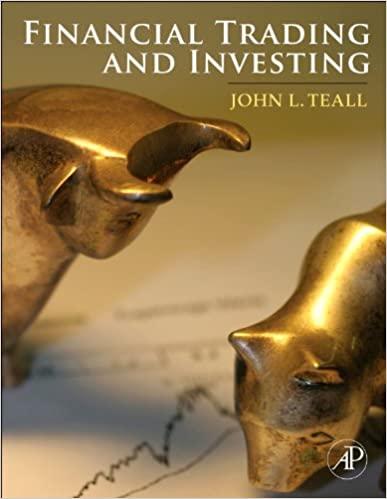Answered step by step
Verified Expert Solution
Question
1 Approved Answer
This question help you think about how returns look at different time horizons. Suppose that one-year log returns rt=log(Rt) are not correlated over time corr(rt,rt+j)=0
 This question help you think about how returns look at different time horizons. Suppose that one-year log returns rt=log(Rt) are not correlated over time corr(rt,rt+j)=0 have mean and variance that are constant over time: E[xt]= and 2[xt]=2 that are constant over time. The compound log long-horizon return is log(Rt+1Rt+k)=rt+1+rt+2++rt+k and the annualized compound log long-horizon return is: log(kRt+1Rt+2Rt+k)=krt+1+rt+2++rt+k a) Find the (unconditional) mean log long horizon returns and the mean annualized log long horizon as functions of horizon k and mean one period return . If the mean annual return is 6%, what is the mean monthly return? What is the mean annualized monthly return? b) Find the (unconditional) variance and standard deviation of log long horizon returns and of the annualized log long horizon returns as functions of horizon k and variance of one period return 2. If the standard deviation of annual returns is 16%, what is the standard deviation of monthly returns
This question help you think about how returns look at different time horizons. Suppose that one-year log returns rt=log(Rt) are not correlated over time corr(rt,rt+j)=0 have mean and variance that are constant over time: E[xt]= and 2[xt]=2 that are constant over time. The compound log long-horizon return is log(Rt+1Rt+k)=rt+1+rt+2++rt+k and the annualized compound log long-horizon return is: log(kRt+1Rt+2Rt+k)=krt+1+rt+2++rt+k a) Find the (unconditional) mean log long horizon returns and the mean annualized log long horizon as functions of horizon k and mean one period return . If the mean annual return is 6%, what is the mean monthly return? What is the mean annualized monthly return? b) Find the (unconditional) variance and standard deviation of log long horizon returns and of the annualized log long horizon returns as functions of horizon k and variance of one period return 2. If the standard deviation of annual returns is 16%, what is the standard deviation of monthly returns Step by Step Solution
There are 3 Steps involved in it
Step: 1

Get Instant Access to Expert-Tailored Solutions
See step-by-step solutions with expert insights and AI powered tools for academic success
Step: 2

Step: 3

Ace Your Homework with AI
Get the answers you need in no time with our AI-driven, step-by-step assistance
Get Started


